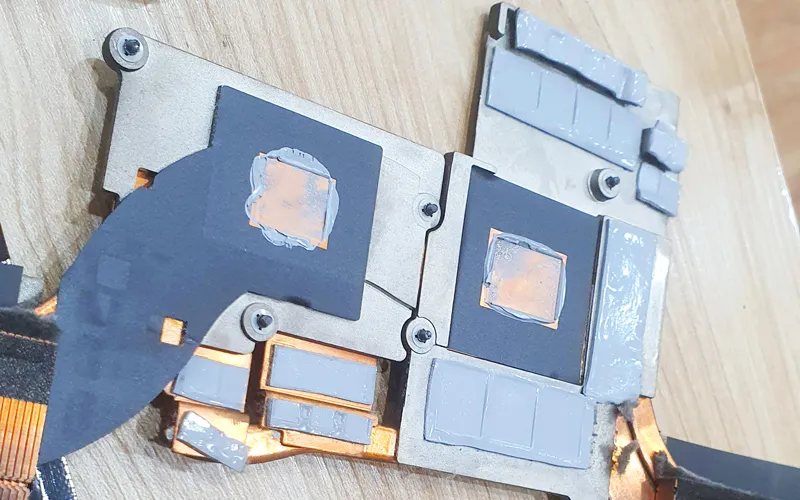What Is a Heat Sink Thermal Pad?
- Posted on:2023-06-20 09:56:00
- Source:AOK Thermal Pad Manufacturer FAQs
A heat sink thermal pad is a type of thermal interface materials (TIMs) that is used to improve the heat transfer between a heat source, such as a microprocessor or integrated circuit, and a heat sink or cooling system. The main purpose of these pads is to fill any air gaps or surface imperfections between the heat source and the heat sink, thus increasing the efficiency of heat dissipation.
Thermal pads are typically made from a soft, flexible, and thermally conductive material such as silicone, graphite, or metal-filled elastomer. They can come in various thicknesses and can be cut to fit the specific shape of the heat source and heat sink interface.
Some advantages of using heat sink thermal pads include:
1. Ease of installation: Thermal pads can be easily applied without the need for special tools or expertise.
2. No mess: Unlike thermal grease or paste, thermal pads do not create a mess and are easier to remove or replace when needed.
3. Consistent performance: Thermal pads provide a consistent thickness and uniform heat transfer across the interface, which can be difficult to achieve with thermal grease.
4. Electrical insulation: Some thermal pads also provide electrical insulation, preventing short circuits or other electrical issues.
Heat sink thermal pads are a popular choice in many electronics applications due to their simplicity, reliability, and ease of use.Thermal pads are used in electronic devices to provide a thermal interface between two surfaces.
To apply a thermal pad, you typically need to follow these steps:
1. Clean the surfaces: Before applying a thermal pad, make sure the surfaces are clean and free of debris, dust, or any other contaminants. You can use a lint-free cloth or a cleaning solution to clean the surfaces.
2. Cut the pad to size: Thermal pads come in different sizes and thicknesses, so you need to make sure that you cut the pad to the appropriate size for your application. You can use a pair of scissors to cut the pad to the right size.
3. Apply the pad: Once you have cut the pad to size, you can apply it to the surface. Make sure that the pad is centered and aligned properly. You can use the adhesive backing on the thermal pad to stick it to the surface.
4. Secure the heat sink: After you have applied the thermal pad, you can attach the heat sink to the device. Make sure that it's properly aligned and secured in place.
5. Test the device: Once you have installed the heat sink, you can test the device to make sure that it's functioning properly and that the temperatures are within the acceptable range.
It's important to note that not all devices require a thermal pad, and some may require other methods of thermal management, such as thermal paste or liquid cooling. It's also important to follow the thermal pad manufacturer instructions and guidelines when applying a thermal pad to ensure proper installation and avoid any damage to the device.
If you would like to learn more about AOK performance thermal materials, please visit our website at www.aok-technologies.com.


